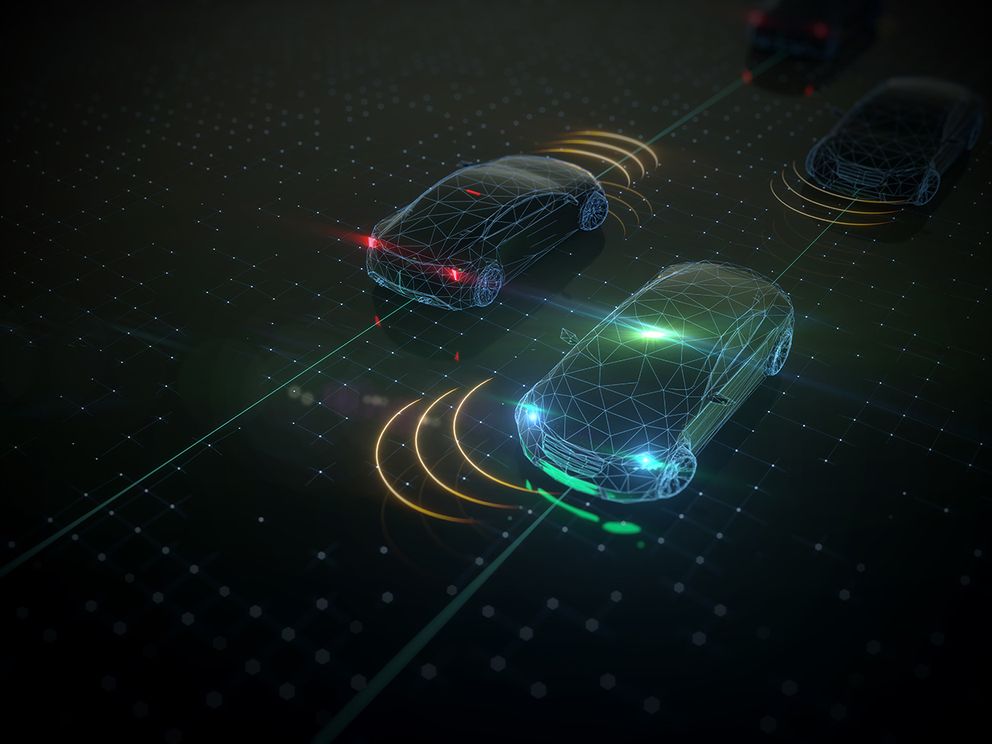Q&A: THE MASTERMINDS BEHIND TOYOTA’S SELF-DRIVING CARS SAY AI STILL HAS A WAY TO GO
작성자
acl
작성일
2021-10-28 18:15
조회
1813
ILLUSTRATION: ISTOCKPHOTO
Getting a car to drive itself is undoubtedly the most ambitious commercial application of artificial intelligence (AI). The research project was kicked into life by the 2004 DARPA Urban Challenge and then taken up as a business proposition, first by Alphabet, and later by the big automakers.
The industry-wide effort vacuumed up many of the world’s best roboticists and set rival companies on a multibillion-dollar acquisitions spree. It also launched a cycle of hype that paraded ever more ambitious deadlines—the most famous of which, made by Alphabet’s Sergei Brin in 2012, was that full self-driving technology would be ready by 2017. Those deadlines have all been missed.
Much of the exhilaration was inspired by the seeming miracles that a new kind of AI—deep learning—was achieving in playing games, recognizing faces, and transliterating voices. Deep learning excels at tasks involving pattern recognition—a particular challenge for older, rule-based AI techniques. However, it now seems that deep learning will not soon master the other intellectual challenges of driving, such as anticipating what human beings might do.
Among the roboticists who have been involved from the start are Gill Pratt, the chief executive officer of Toyota Research Institute (TRI) , formerly a program manager at the Defense Advanced Research Projects Agency (DARPA); and Wolfram Burgard, vice president of automated driving technology for TRI and president of the IEEE Robotics and Automation Society. The duo spoke with IEEE Spectrum’s Philip Ross at TRI’s offices in Palo Alto, Calif.
This interview has been condensed and edited for clarity.
Gill Pratt PHOTO: TOYOTA
Gill Pratt: There are three different systems that you need in a self-driving car: It starts with perception, then goes to prediction, and then goes to planning.
The one that by far is the most problematic is prediction. It’s not prediction of other automated cars, because if all cars were automated, this problem would be much more simple. How do you predict what a human being is going to do? That’s difficult for deep learning to learn right now.
Spectrum: Can you offset the weakness in prediction with stupendous perception?
 Wolfram Burgard PHOTO: TOYOTA RESEARCH INSTITUTE FOR BURGARD
Wolfram Burgard PHOTO: TOYOTA RESEARCH INSTITUTE FOR BURGARD
Wolfram Burgard: Yes, that is what car companies basically do. A camera provides semantics, lidar provides distance, radar provides velocities. But all this comes with problems, because sometimes you look at the world from different positions—that’s called parallax. Sometimes you don’t know which range estimate that pixel belongs to. That might make the decision complicated as to whether that is a person painted onto the side of a truck or whether this is an actual person.
With deep learning there is this promise that if you throw enough data at these networks, it’s going to work—finally. But it turns out that the amount of data that you need for self-driving cars is far larger than we expected.
Spectrum: When do deep learning’s limitations become apparent?
Pratt: The way to think about deep learning is that it’s really high-performance pattern matching. You have input and output as training pairs; you say this image should lead to that result; and you just do that again and again, for hundreds of thousands, millions of times.
Here’s the logical fallacy that I think most people have fallen prey to with deep learning. A lot of what we do with our brains can be thought of as pattern matching: “Oh, I see this stop sign, so I should stop.” But it doesn’t mean all of intelligence can be done through pattern matching.
“I asked myself, if all of those cars had automated drive, how good would they have to be to tolerate the number of crashes that would still occur?”
For instance, when I’m driving and I see a mother holding the hand of a child on a corner and trying to cross the street, I am pretty sure she’s not going to cross at a red light and jaywalk. I know from my experience being a human being that mothers and children don’t act that way. On the other hand, say there are two teenagers—with blue hair, skateboards, and a disaffected look. Are they going to jaywalk? I look at that, you look at that, and instantly the probability in your mind that they’ll jaywalk is much higher than for the mother holding the hand of the child. It’s not that you’ve seen 100,000 cases of young kids—it’s that you understand what it is to be either a teenager or a mother holding a child’s hand.
Toyota is using this Platform 4 automated driving test vehicle, based on the Lexus LS, to develop Level-4 self-driving capabilities for its “Chauffeur” project. PHOTO: TOYOTA
Spectrum: Toyota is building a system called Guardian to back up the driver, and a more futuristic system called Chauffeur, to replace the driver. How can Chauffeur ever succeed? It has to be better than a human plus Guardian!
Pratt: In the discussions we’ve had with others in this field, we’ve talked about that a lot. What is the standard? Is it a person in a basic car? Or is it a person with a car that has active safety systems in it? And what will people think is good enough?
These systems will never be perfect—there will always be some accidents, and no matter how hard we try there will still be occasions where there will be some fatalities. At what threshold are people willing to say that’s okay?
Spectrum: You were among the first top researchers to warn against hyping self-driving technology. What did you see that so many other players did not?
Pratt: First, in my own case, during my time at DARPA I worked on robotics, not cars. So I was somewhat of an outsider. I was looking at it from a fresh perspective, and that helps a lot.
Second, [when I joined Toyota in 2015] I was joining a company that is very careful—even though we have made some giant leaps—with the Prius hybrid drive system as an example. Even so, in general, the philosophy at Toyota is kaizen—making the cars incrementally better every single day. That care meant that I was tasked with thinking very deeply about this thing before making prognostications.
And the final part: It was a new job for me. The first night after I signed the contract I felt this incredible responsibility. I couldn’t sleep that whole night, so I started to multiply out the numbers, all using a factor of 10. How many cars do we have on the road? Cars on average last 10 years, though ours last 20, but let’s call it 10. They travel on an order of 10,000 miles per year. Multiply all that out and you get 10 to the 10th miles per year for our fleet on Planet Earth, a really big number. I asked myself, if all of those cars had automated drive, how good would they have to be to tolerate the number of crashes that would still occur? And the answer was so incredibly good that I knew it would take a long time. That was five years ago.
Burgard: We are now in the age of deep learning, and we don’t know what will come after. We are still making progress with existing techniques, and they look very promising. But the gradient is not as steep as it was a few years ago.
Pratt: There isn’t anything that’s telling us that it can’t be done; I should be very clear on that. Just because we don’t know how to do it doesn’t mean it can’t be done.
출처 : https://spectrum.ieee.org/qa-the-masterminds-behind-toyotas-selfdriving-cars-say-ai-still-has-a-way-to-go

